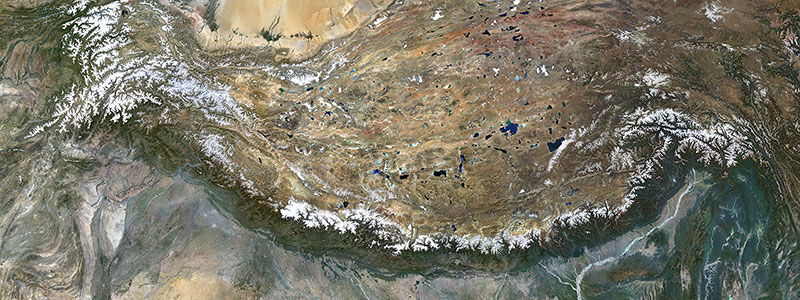PlanetSAT — A Technically Advanced Global Imagery Basemap
Discover how PlanetObserver transforms Sentinel-2 imagery into a seamless, accurate, and visually consistent global imagery basemap.

A New Standard in Global Imagery
In the geospatial sector, the value of satellite imagery lies not only in its visual appeal but also in its accuracy, consistency, and readiness for operational use.
From defense and simulation to broadcast and GIS, professionals rely on high-quality basemaps to support decision-making, and visualization.
Among the many global imagery products available today, PlanetSAT, developed by PlanetObserver, stands out for its unique combination of visual uniformity, technical robustness, and precision in data processing.
Built primarily from ESA Sentinel-2 imagery at 10-meter resolution, PlanetSAT provides a seamless, cloud-free, and visually coherent view of the Earth’s surface — a foundation suitable for mission preparation, real-time visualization, and cartographic projects.
A Carefully Curated Global Basemap
Producing a global mosaic that meets professional standards begins with meticulous data selection. PlanetSAT is primarily generated from a curated collection of Sentinel-2 scenes, each chosen for its clarity, recency, and minimal cloud coverage.
Satellite data selection is far from trivial. Each scene must be evaluated not only for image quality but also for its seasonal balance, radiometric stability, and geographic consistency. These criteria are essential to maintain visual continuity and ensure the mosaic accurately represents the planet’s diversity — from arid deserts to tropical forests and polar regions.
To manage this complexity, PlanetObserver has developed a proprietary cataloguing and prioritization process. This internal system allows the team to handle petabyte-scale inputs while selecting only the most relevant and consistent scenes for integration. This approach ensures that every tile of the global mosaic reflects the best possible data available, both technically and visually.

Harnessing the Power of Sentinel-2 Imagery
The choice of Sentinel-2 as the primary source is strategic. The twin satellites operated by the European Space Agency deliver imagery with high radiometric quality and frequent revisit times — every five days at the equator.
This frequency provides multiple acquisition opportunities to minimize cloud cover and capture seasonal variations, a major advantage for global mapping.
By using Sentinel-2 data, PlanetSAT ensures:
• Uniform global coverage at 10m resolution.
• Consistent multispectral characteristics ideal for color calibration.
• Free and open data access, ensuring long-term sustainability of the dataset.

From Raw Data to a Global Vision
The transformation of raw Sentinel-2 scenes into the finished PlanetSAT basemap involves several processing steps — from mosaic assembling to color calibration. Each phase contributes to the mosaic’s final coherence and usability.
Yet, what makes PlanetSAT unique is not only its technical pipeline but also the balance between automation and human expertise. The product is the result of advanced algorithms refined through decades of experience in visual interpretation and color processing.
This combination defines PlanetObserver’s approach: technology ensures efficiency and consistency, while human expertise guarantees realism and visual quality.

A Foundation for Professional Applications
PlanetSAT has become an essential base layer for professional users who demand both accuracy and aesthetics. Its applications span a wide spectrum — from situational awareness in defense systems to the immersive realism of flight simulators and the visual quality required by broadcast media.
Whether used as a standalone map or integrated into a complex simulation environment, PlanetSAT provides a harmonized view of the Earth — reliable, current, and beautiful.
Next in the Series:
The second article will reveal how PlanetObserver combines automated preprocessing, cloud masking, and manual color harmonization to create one of the most visually consistent and technically advanced global imagery basemaps available today.
Find out more about Sentinel-2 imagery on Copernicus website [Copernicus is the Earth observation component of the European Union's Space programme].



